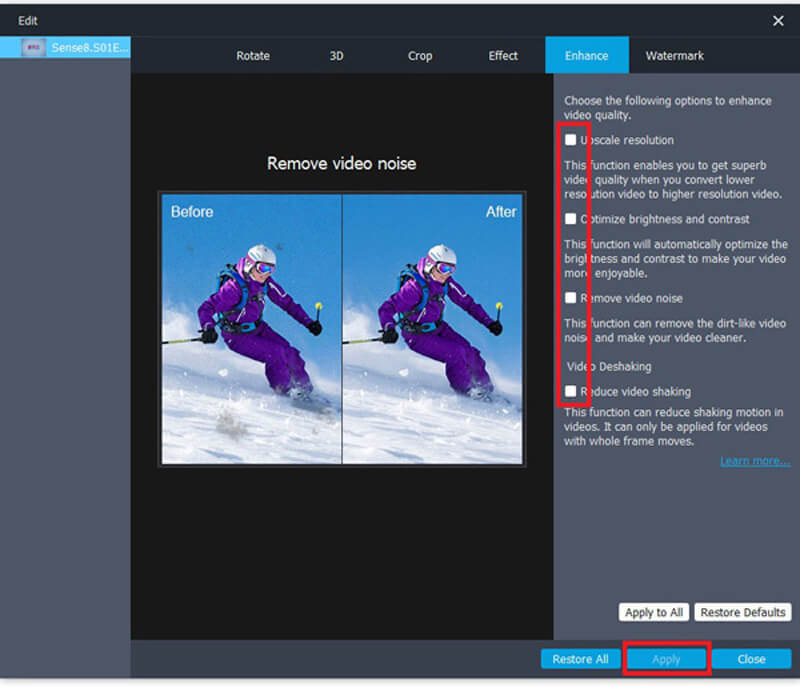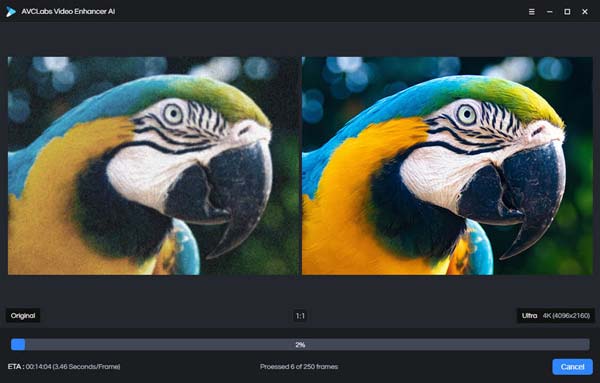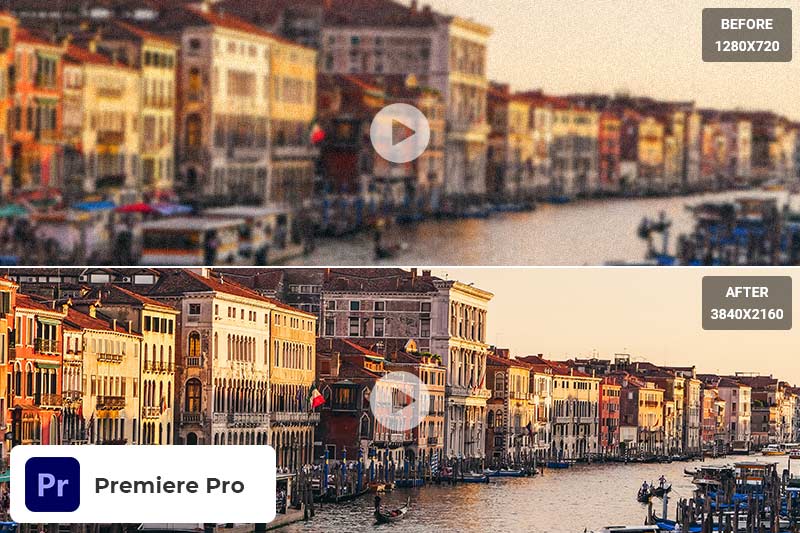Understanding Video Resolution and Upscaling
When it comes to video production, resolution plays a crucial role in determining the overall quality of the footage. Standard Definition (SD), High Definition (HD), and 4K are the most common video resolutions used today. SD has a resolution of 480p, HD has a resolution of 720p or 1080p, and 4K has a resolution of 3840 x 2160 pixels. Understanding the differences between these resolutions is essential for creating high-quality videos that meet the demands of modern devices and platforms.
Upscaling a video involves increasing its resolution to improve its quality and make it compatible with devices that support higher resolutions. This process can be beneficial for several reasons. Firstly, upscaling can enhance the overall visual quality of the video, making it more engaging and immersive for the viewer. Secondly, upscaling can ensure that the video is compatible with modern devices, such as 4K TVs and smartphones, which often have high-resolution displays. Finally, upscaling can help to future-proof the video, making it more suitable for emerging technologies and platforms.
However, upscaling a video is not as simple as just increasing its resolution. It requires a deep understanding of video production and editing techniques, as well as the use of specialized software and tools. In the next section, we will explore the different software options available for upscaling videos and discuss their key features and pricing plans.
For those looking to learn how to upscale a video, it’s essential to understand the basics of video resolution and the benefits of upscaling. By increasing the resolution of a video, creators can improve its quality, make it more compatible with modern devices, and future-proof it for emerging technologies. Whether you’re a professional video producer or an enthusiast, upscaling can be a valuable technique to add to your skillset.
Choosing the Right Software for Video Upscaling
When it comes to upscaling a video, having the right software is crucial. There are several video editing software options available that support upscaling, each with its own strengths and weaknesses. In this section, we will explore some of the most popular video editing software options for upscaling videos.
Adobe Premiere Pro is a popular choice among video editors, and for good reason. It offers advanced upscaling features, including the ability to upscale videos to 4K and 8K resolutions. Premiere Pro also supports AI-powered upscaling, which can help to improve the quality of the upscaled video. The software is available for both Windows and Mac, and offers a free trial, as well as a subscription-based pricing plan.
Final Cut Pro is another popular video editing software that supports upscaling. It offers advanced features such as color grading and audio editing, as well as support for 4K and 5K resolutions. Final Cut Pro is exclusive to Mac, and offers a one-time purchase option, as well as a free trial.
DaVinci Resolve is a free video editing software that also supports upscaling. It offers advanced features such as color grading and audio editing, as well as support for 4K and 8K resolutions. DaVinci Resolve is available for both Windows and Mac, and offers a free version, as well as a paid upgrade.
When choosing a software for upscaling a video, it’s essential to consider the specific needs of the project. For example, if the video requires advanced color grading and audio editing, Adobe Premiere Pro or Final Cut Pro may be a good choice. However, if the video only requires basic upscaling, DaVinci Resolve may be a more cost-effective option.
Regardless of the software chosen, it’s essential to have a good understanding of how to use it to achieve professional-looking results. In the next section, we will explore the steps involved in preparing a video for upscaling, including cleaning up the footage, removing noise and artifacts, and adjusting the brightness and contrast.
Preparing Your Video for Upscaling
Before upscaling a video, it’s essential to prepare the footage to ensure the best possible results. This involves cleaning up the footage, removing noise and artifacts, and adjusting the brightness and contrast. In this section, we will explore the steps involved in preparing a video for upscaling.
Cleaning up the footage involves removing any unwanted elements, such as dust, dirt, or other debris, that may be present in the video. This can be done using video editing software, such as Adobe Premiere Pro or DaVinci Resolve, which offer advanced tools for cleaning up footage.
Removing noise and artifacts is also crucial when preparing a video for upscaling. Noise can be caused by a variety of factors, including low light conditions or poor camera quality, and can result in a grainy or pixelated appearance. Artifacts, on the other hand, can be caused by compression or other factors, and can result in a distorted or blocky appearance. Video editing software can be used to remove noise and artifacts, and improve the overall quality of the footage.
Adjusting the brightness and contrast is also important when preparing a video for upscaling. This can help to improve the overall appearance of the footage, and ensure that it is optimized for upscaling. Video editing software can be used to adjust the brightness and contrast, and fine-tune the footage for upscaling.
Working with a high-quality source file is also essential when upscaling a video. This means using a high-resolution source file, such as a 4K or 8K video, and ensuring that it is free from noise and artifacts. Using a high-quality source file will help to ensure that the upscaled video is of the highest possible quality.
By following these steps, you can prepare your video for upscaling and ensure that it is optimized for the best possible results. In the next section, we will explore the different upscaling techniques, including interpolation, AI-powered upscaling, and motion-compensated interpolation.
Upscaling Techniques: Interpolation, AI, and More
When it comes to upscaling a video, there are several techniques that can be used to improve the quality of the footage. In this section, we will explore the different upscaling techniques, including interpolation, AI-powered upscaling, and motion-compensated interpolation.
Interpolation is a technique that involves creating new pixels to fill in the gaps between existing pixels. This can be done using a variety of algorithms, including linear interpolation, bicubic interpolation, and more. Interpolation is a simple and effective way to upscale a video, but it can sometimes result in a soft or blurry appearance.
AI-powered upscaling is a more advanced technique that uses artificial intelligence to improve the quality of the footage. This technique involves analyzing the video and using machine learning algorithms to create new pixels that match the surrounding area. AI-powered upscaling can produce highly detailed and realistic results, but it can also be computationally intensive and require powerful hardware.
Motion-compensated interpolation is a technique that takes into account the motion of objects in the video when upscaling. This technique involves analyzing the motion of objects and using that information to create new pixels that match the surrounding area. Motion-compensated interpolation
Upscaling Techniques: Interpolation, AI, and More
When it comes to upscaling a video, there are several techniques that can be used to improve the quality of the footage. In this section, we will explore the different upscaling techniques, including interpolation, AI-powered upscaling, and motion-compensated interpolation.
Interpolation is a technique that involves creating new pixels to fill in the gaps between existing pixels. This can be done using a variety of algorithms, including linear interpolation, bicubic interpolation, and more. Interpolation is a simple and effective way to upscale a video, but it can sometimes result in a soft or blurry appearance.
AI-powered upscaling is a more advanced technique that uses artificial intelligence to improve the quality of the footage. This technique involves analyzing the video and using machine learning algorithms to create new pixels that match the surrounding area. AI-powered upscaling can produce highly detailed and realistic results, but it can also be computationally intensive and require powerful hardware.
Motion-compensated interpolation is a technique that takes into account the motion of objects in the video when upscaling. This technique involves analyzing the motion of objects and using that information to create new pixels that match the surrounding area. Motion-compensated interpolation
Upscaling Techniques: Interpolation, AI, and More
When it comes to upscaling a video, there are several techniques that can be used to improve the quality of the footage. In this section, we will explore the different upscaling techniques, including interpolation, AI-powered upscaling, and motion-compensated interpolation.
Interpolation is a technique that involves creating new pixels to fill in the gaps between existing pixels. This can be done using a variety of algorithms, including linear interpolation, bicubic interpolation, and more. Interpolation is a simple and effective way to upscale a video, but it can sometimes result in a soft or blurry appearance.
AI-powered upscaling is a more advanced technique that uses artificial intelligence to improve the quality of the footage. This technique involves analyzing the video and using machine learning algorithms to create new pixels that match the surrounding area. AI-powered upscaling can produce highly detailed and realistic results, but it can also be computationally intensive and require powerful hardware.
Motion-compensated interpolation is a technique that takes into account the motion of objects in the video when upscaling. This technique involves analyzing the motion of objects and using that information to create new pixels that match the surrounding area. Motion-compensated interpolation
Upscaling Techniques: Interpolation, AI, and More
When it comes to upscaling a video, there are several techniques that can be used to improve the quality of the footage. In this section, we will explore the different upscaling techniques, including interpolation, AI-powered upscaling, and motion-compensated interpolation.
Interpolation is a technique that involves creating new pixels to fill in the gaps between existing pixels. This can be done using a variety of algorithms, including linear interpolation, bicubic interpolation, and more. Interpolation is a simple and effective way to upscale a video, but it can sometimes result in a soft or blurry appearance.
AI-powered upscaling is a more advanced technique that uses artificial intelligence to improve the quality of the footage. This technique involves analyzing the video and using machine learning algorithms to create new pixels that match the surrounding area. AI-powered upscaling can produce highly detailed and realistic results, but it can also be computationally intensive and require powerful hardware.
Motion-compensated interpolation is a technique that takes into account the motion of objects in the video when upscaling. This technique involves analyzing the motion of objects and using that information to create new pixels that match the surrounding area. Motion-compensated interpolation
Upscaling Techniques: Interpolation, AI, and More
When it comes to upscaling a video, there are several techniques that can be used to improve the quality of the footage. In this section, we will explore the different upscaling techniques, including interpolation, AI-powered upscaling, and motion-compensated interpolation.
Interpolation is a technique that involves creating new pixels to fill in the gaps between existing pixels. This can be done using a variety of algorithms, including linear interpolation, bicubic interpolation, and more. Interpolation is a simple and effective way to upscale a video, but it can sometimes result in a soft or blurry appearance.
AI-powered upscaling is a more advanced technique that uses artificial intelligence to improve the quality of the footage. This technique involves analyzing the video and using machine learning algorithms to create new pixels that match the surrounding area. AI-powered upscaling can produce highly detailed and realistic results, but it can also be computationally intensive and require powerful hardware.
Motion-compensated interpolation is a technique that takes into account the motion of objects in the video when upscaling. This technique involves analyzing the motion of objects and using that information to create new pixels that match the surrounding area. Motion-compensated interpolation







